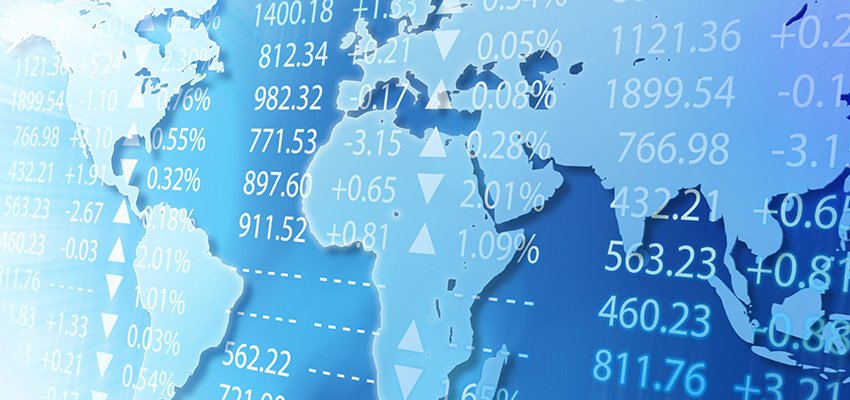MARKETS have continued the strong rebound in equities for 2019, following the devastation of the final quarter catastrophe that was the close of 2018. The origins of the final quarter rout in 2018 can be directly tied to the US Federal Reserve and US/China trade wars. Add in to the mix the political fall-out from the US mid-term elections and Brexit. These all contributed to a ‘perfect storm’ destroying trillions of dollars in wealth. The turmoil unleashed on equities markets was founded in the uncertainty surrounding global growth due to trade wars, higher costs of capital and political instability. What has changed in 2019?
All of these destructive elements persisted into 2019, but concerns were addressed and sentiment reversed sharply. The US Federal Reserve had been on a mission throughout 2017/18 to reverse quantitative easing and restore normalcy to monetary policy, consequences be damned. The effect was huge and, I would argue, devastating. The acute rise in interest rates sharply increased the cost of capital and added a massive burden on debt serviceability. It also provided an alternative investment opportunity to shares. The ensuing collapse in equity markets gave the boffins in the Fed cause for reflection. In addition, President Trump launched an all-out assault on Fed Chairman Powell, firmly placing blame at his door. The Fed responded and halted the interest rate increases and tempered their hawkish language to include the key word ‘patience’. This had the desired effect and almost like Usain Bolt, markets have been roaring back this year.
Trade wars
The other major contributor to global uncertainty, was the expanding trade war between the two largest world economies, China and the US. This all came to a head at the G20 in December 2018, where both parties failed to reach an agreement. The fallout and consequences were huge. The trade war directly threatened the global supply chain, status quo. This would directly impact global trade and growth. Uncertainty led to negativity and ultimately was a massive contributor to market pandemonium. The agreement they did reach was to suspend further tariff increases and set a process in place with a deadline of 1 March, 2019. It is the progress of this process that has reassured markets that advancements have been made and they are on target to reach an agreement of substance by the desired date. This has allowed equity markets to recoup much of the losses suffered in the meltdown late in 2018. Currencies have also settled down with the Fed’s dovish attitude allowing bond yields to ease substantially and soften the rampant US dollar.
Brexit and the EU Common Market
The UK moves closer and closer to their Brexit date of March 29 without a deal with the EU. UK PM May negotiated a deal, over a two-year period that was, many argued, an indignity to the UK Parliament and the British people. It was summarily rejected by the Parliament and chaos ensued. There has been literally no progress towards the Brexit, voted for by the British people in 2016 in a referendum. The country is split and seemingly sick of the process. The economy has been immeasurably harmed as has the currency. The uncertainty has sent shock waves across markets. The closer to the exit date, the more panic and brinkmanship arises, reflected in the language of the protagonists. The EU refuse to budge and the UK refuses to accept capitulation. The most likely scenario looks increasingly like a ‘no deal’ Brexit under WTO rules. The EU may blink and relent, offering a compromise, but this is increasingly less likely as the deadline approaches. There will be an impact on both the EU and the UK economies with global fall-out, but much of this is built in to the British scenario. The EU may be heading towards recession and this jolt may be enough to tip the scales. The failure to secure a deal would also ensure that reparations ($39bn), would not be forthcoming, leaving an irreplaceable hole in their budget
Central bank policies
The Fed has retreated from their ‘QT’ (quantitative tightening) strategy and adopted a ‘patient’ approach to monetary policy. This has released the pressure on other global Central Banks to raise rates. The Bank of England has been refraining from increasing rates, despite inflationary pressures, due to the risks surrounding the Brexit chaos. The ECB has halted their long-lasting QE program, but it will be a long time before they return to anything like a normalised interest rate environment, especially with the threat of a looming recession. The RBA and RBNZ have not moved at all, but both have retreated from hawkish rhetoric and looked decidedly dovish in their policy stance. Global central banks have reverted to benign, if not loose monetary policy, to encourage investment and growth, countering economic and political uncertainty. The national debt levels have only increased in developed economies, post-GFC, despite stronger economic performances. High debt levels held by countries and on a consumer level, have therefore prevented any sharp rise in interest rates, as debt serviceability then becomes a major threat to world markets. It is easier for the global central banks to retain easy monetary conditions so that is what they will continue to do.
* Paul Bettany is a foreign exchange partner at Collinson & Co
paul@collinsonfx.com

